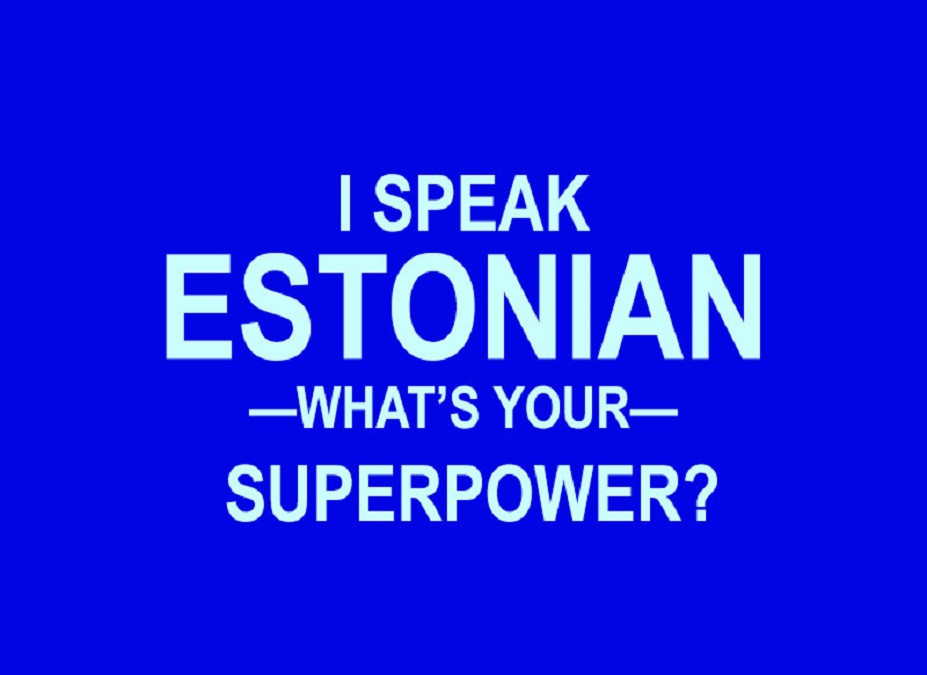The Estonian language is one of the hardest languages to learn for a native English speaker, according to a travel blog called Atlas & Boots, using the data from the US State Department’s Foreign Service Institute.*
Based on the Foreign Service Institute’s rankings, Estonian is the fifth hardest language to learn “because it operates with 14 noun cases”.
“English has largely lost its case system but the distinction can be demonstrated through personal pronouns: forms such as I, he and we are used in the role of subject (‘I touch the book’), while forms such as me, him and us are used in the role of object (‘Maria touched me’),” Atlas & Boots points out. “Now, extend that to 14 versions and you will have an idea of why Estonian is classed as complex.”
“Consonants and vowels in Estonian can come in three lengths (short, long, overly long), and often change the meaning of a word (lina is ‘linen’ while linna is ‘city’). Moreover, Estonian has 25 diphthongs (when two adjacent vowel sounds occur within the same syllable) and many exceptions to defined grammar rules,” the blog ads.
Estonian the most difficult Latin alphabet based language to learn
The hardest language, according to the blog, is Japanese, followed by Chinese, Korean and Arabic. That means the Estonian language is the first language on the list that is based on the Latin alphabet – the same one the English language is based on.
Finnish is ranked sixth, right after Estonian (despite having 15 noun cases) and Hungarian seventh (18 cases). The list goes on with Mongolian on the eighth place, Vietnamese ninth and Thai tenth.
The Atlas & Boots blog does point out that “no list like this can be 100% accurate as language learning is subjective. Difficulty levels can vary based on an individual’s memory capacity, dedication and motivation. In short, do not let this list discourage you.”
The Foreign Service Institute at the US Department of State, on whose data the list is based on, trains diplomats in language learning and maintains an internal ranking of language difficulty – specifically, how long it would take a native English speaker to reach proficiency, the blog says.
Estonian language is spoken natively by about 1.1 million people: 922,000 people in Estonia and 160,000 outside Estonia.
The cover image is illustrative. * This article was originally published on 6 December 2015 and was lightly edited on 14 March 2018.


It’s not about the cases, as much as there are very few rules on how to distinguish (and learn) the nimetav, omastav and osastav. As a foreigner is quite hard to memorize these basic cases and why they’re so irregular.
ask yourself:
kes? mis?
keda? mida?
kelle? mille?
and you’ll understand the differences 🙂
etc.
kellel? millel?
kellele? millele?
kellelt? millelt?
kelles? milles?
kellesse? millesse?
kellest? millest?
etc. etc. etc.
plus irregularities
You have a mistake in Your example. linn = city, linna = depending on the case, a) owned by the city (whose?), (going) to the city (where?), (destroying) the city (destroying/visiting/photo-shooting etc what?), etc and last but not least, surname of our famous singer Ivo Linna 🙂
Better example would be “kole” vs “kolle”. Meaning “ugly” vs “source”, “monster” in partitive plural, “permanent fireplace”, “source”… it can mean a lot…
Btw, You should try Lithuanian. It’s said to be “language of verbs”.
For instance (as my co-worker claims) the choice of verb “pour” (which they have many) defines the temperature of the water you pour… Now get that logic.
Yep, I am currently battling to learn really well just one case (partitive) and am really discouraged to try to learn the eleven I will have to master after.